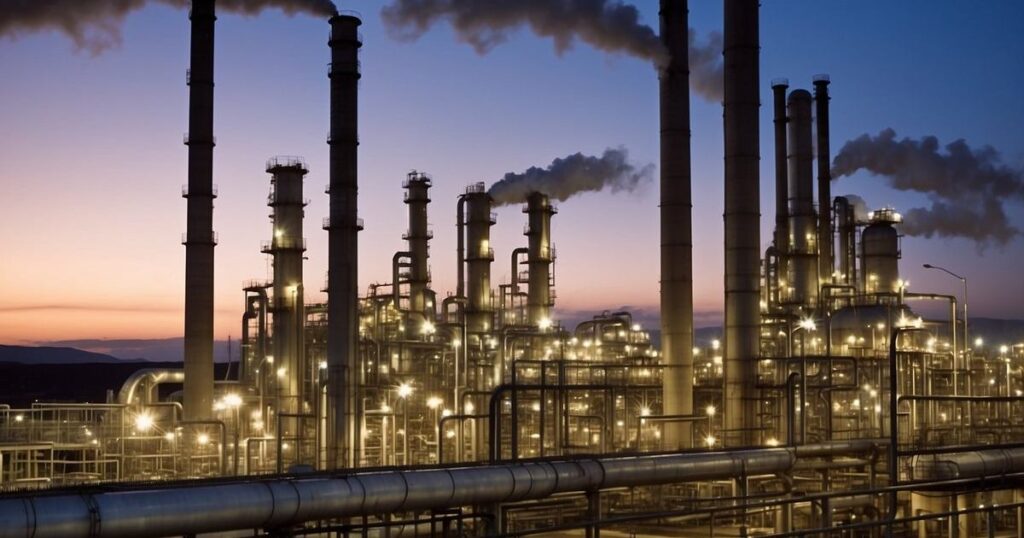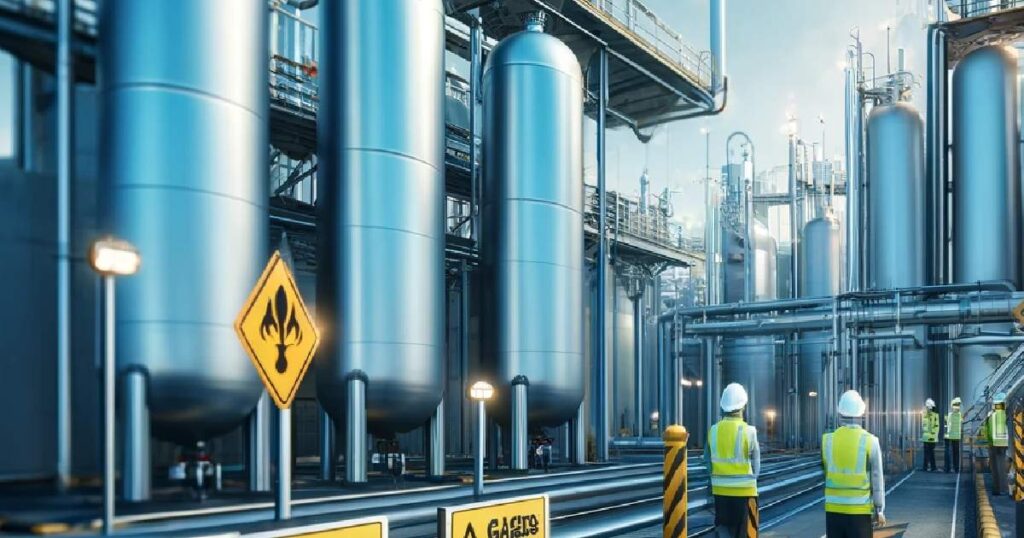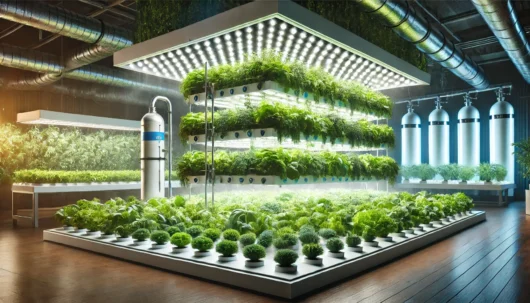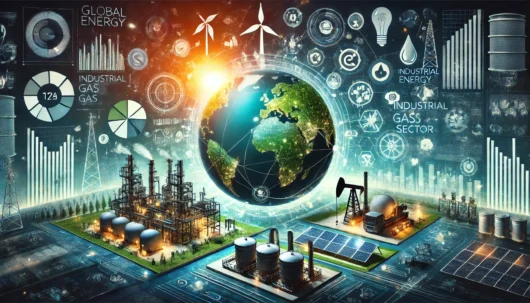Industrial gas production encompasses sophisticated techniques to manufacture gases pivotal in various sectors, from healthcare and petrochemicals to energy and manufacturing. These gases, such as oxygen, nitrogen, argon, and hydrogen, are fundamental in executing various industrial processes. At the core of this production is the separation of air through cryogenic distillation, which enables the extraction of desired gases at high purities. In addition, technologies such as steam methane reforming and electrolysis play crucial roles, especially in hydrogen production.
Your understanding of industrial gas production’s supply chain and storage strategies is equally important. Typically, distributors use cylinders, bulk containers, or pipelines to deliver gas in gaseous or liquid forms safely and efficiently. Equipment utilised for storage and transport must meet stringent safety standards to handle the often high-pressure and low-temperature conditions required for these gases. Advanced monitoring and process management programs aid in maintaining the integrity of the gas from production facilities to end users.
Key Takeaways
- Industrial gas production utilises methods such as cryogenic distillation and steam methane reforming.
- The gas supply chain includes transport in various forms like cylinders and pipelines.
- Safety and process management are crucial for maintaining the quality and integrity of industrial gases.
Fundamentals of Industrial Gas Production

Industrial gas production is integral to modern industry, encompassing various gases, production methods, and applications. Understanding these components is essential for grasping the field’s complexity and significance.
Types and Properties of Industrial Gases
The most common industrial gases include:
- Air: A mixture predominantly of Nitrogen and Oxygen, often separated into its constituent parts for industrial use.
- Noble Gases: Like Helium, Neon, Argon, Krypton, and Xenon, which are known for their low reactivity.
- Hydrogen: A highly flammable gas used widely in chemical synthesis and as a fuel.
- Carbon Dioxide: Used in refrigeration, fire extinguishers, and the food and beverage industry.
- Acetylene: Acetylene is employed in welding and cutting due to its high flame temperature.
Unique properties such as inertness, flammability, or refrigerant capabilities characterise these gases, making them suitable for various industrial applications.
Industrial Gas Production Processes
The key processes in industrial gas production involve:
- Liquefaction: Cooling gases, such as air, to a liquid state to separate different components based on their boiling points.
- Reforming: A chemical process used to produce Hydrogen from hydrocarbons.
- Chemical Synthesis: Combining elements or compounds to produce an industrial gas such as Acetylene.
Storage and transport of industrial gases are carried out using cylinders, tanks, and pipeline systems, ensuring they reach their application sites safely and efficiently.
Usage and Applications
Your industry might utilise industrial gases in diverse ways, including:
- Manufacturing: For processes like creating other chemicals or steel production, gases like Oxygen and Nitrogen play vital roles.
- Food and Beverage: Carbon Dioxide is used for carbonation, and Nitrogen is used for packaging.
- Medicine and Pharmaceuticals: Gases are used in respiratory therapies and anaesthesia.
- Electronics: Pure gases are used to create semiconductors and other components.
- Aerospace: Providing inert environments or propellants for various aircraft and spacecraft production stages.
These applications underscore the fundamental role of industrial gases in sectors ranging from heavy industry to high-tech manufacturing and beyond.
Supply, Storage, and Safety Considerations

Industrial gas production involves complex processes that ensure the supply of gases meets the demand with guaranteed safety. Storage and handling are integral to maintaining the integrity of gases delivered to various industries.
Storage Solutions and Safety
When storing industrial gases, you’ll deal with cylinders and larger storage tanks, where pressure and volume are critical factors. Designers create high-strength steel or aluminium cylinders to hold gases at high pressure. For larger volumes, liquefied gases like Liquefied Petroleum Gas (LPG) and natural gas are stored in pressurised storage tanks. Safety is paramount; consider each gas’s critical temperature and pressure to prevent phase change and retain the desired physical properties.
- Dewars: Vacuum-insulated vessels keeping contents well below ambient temperature.
- Regulators: To control the pressure during discharge and prevent rapid decompression.
Your storage area should provide the following:
- Protection from extreme temperatures
- Adequate ventilation
- Secured upright positioning for cylinders
- Clear labelling indicating content and hazards
Transportation and Distribution
The distribution systems for industrial gases encompass packaged gases in cylinders, tube trailers for high pressure, and cryogenic tankers for liquefied gases. Your transportation and distribution methods must account for the thermal conductivity and pressure of the gas being transported. Ensure all containment systems, such as pressure vessels and Dewars, are built for operational flexibility and durability.
Key points for safe and effective distribution:
- Maintain Proper Pressure: Vehicles should have pressure relief devices.
- Compliance with Codes: Adhere to regional transport regulations.
- Secure Handling: Avoid dropping or dragging cylinders.
Regulatory Standards and Environmental Issues
Industrial gas suppliers must follow stringent regulatory standards to ensure safety and mitigate environmental impact. Supply contracts should reflect adherence to regulations covering gas production, storage, and distribution.
Environmental considerations include:
- Minimising leaks during storage and transport
- Monitoring emissions from the production process
Industry standards often set by government bodies ensure that:
- Distribution systems are leak-proof and regularly inspected
- Pressure vessels meet design and maintenance codes
Frequently Asked Questions
Industrial gas production is pivotal in various sectors, utilising different methods and processes to meet industry needs.
What are the primary uses of industrial gases?
Industrial gases serve a multiplicity of applications. Manufacturers often use gases like oxygen in steel production and nitrogen in food packaging to ensure the freshness of your everyday items.
How do companies produce industrial gases?
The process of industrial gas production often depends on the type of gas required. Manufacturers commonly employ methods such as cryogenic distillation for oxygen and nitrogen and steam methane reforming for hydrogen.
Which gases are predominantly produced by the industrial sector?
The industrial sector primarily produces gases such as oxygen for metallurgical processes, nitrogen for chemical storage and protection, and argon for welding and semiconductor manufacturing.
What are the leading companies in the industrial gas market?
Prominent companies in this market include The Linde Group, Air Liquide, and Air Products and Chemicals, Inc., which have a significant global presence and expertise in gas production and supply.
How has industrial gas production evolved over recent years?
There have been progressive developments in industrial gas production, with a substantial shift towards low-carbon and cost-effective production methods to meet environmental standards and economic demands.
What are the three most prevalent industrial gases?
Oxygen, nitrogen, and carbon dioxide are the three most prevalent industrial gases, each having critical roles in various processes, from manufacturing to food preservation and healthcare.


